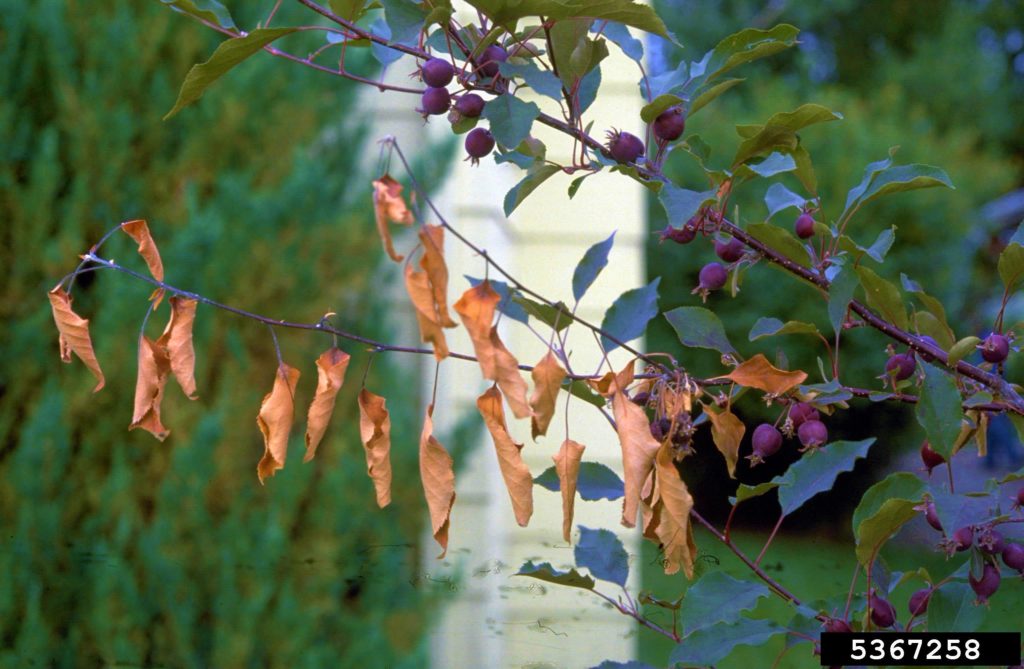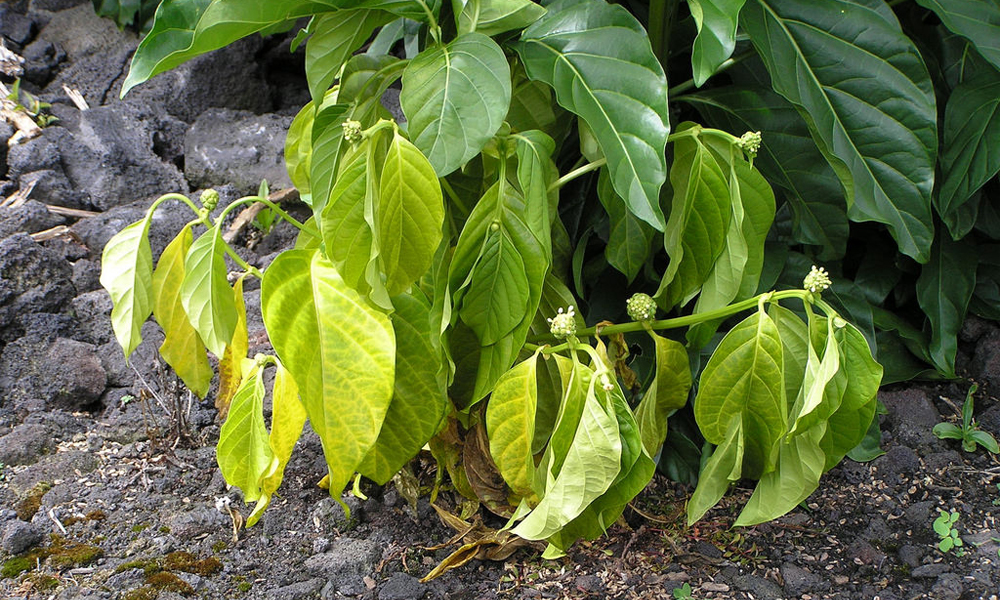Fireblight spreads quickly between trees in close proximity. Pollinators, rain and wind can spread the disease.
Description & Treatment
Fireblight is a bacterial disease affecting apple, pear, crabapple, hawthorn, and quince. It spreads quickly between trees in close proximity. Pollinators, rain and wind can spread the disease. The pathogen (Erwinia amylovora) can spread through the vascular system from the point of infection (e.g., blossoms, stomates, wounds) systemically to roots. Symptoms can appear on the trunk, limbs or twigs as a canker. Less noticeable is bacteria oozing from split bark, which has a wet appearance. Fireblight infection will make leaves and twigs appear burned or scorched and will cause blossoms to turn brown and appear water soaked. A telltale sign is the “shepherds crook” which forms in the branch tips. Fireblight can lead to tree death.

Open flowers are the most common infection sites and remain susceptible until petal fall.
Once infected, the bacterial pathogen can live within the plant indefinitely. Disease development is favored by wet weather and warm temperatures (75-85F). Succulent, rapid growth is more susceptible to infection; avoid high nitrogen fertilizers and excess watering. Use balanced slow release fertilizers and delay applications until after petal fall. Prune diseased wood during the winter dormant period; alternatively prune in summer when higher temperatures do not favor the rapid spread of disease.
Proper branch pruning is important to excise infected branch tissues.
To do so, locate the lower extent of the canker and prune to the next lowest branch union taking care not to cut into the branch collar. To determine the extent of the cankered tissue, scrape the bark to expose the sapwood. Infected wood is brown in color, turning red then flecked as you move down. Beyond these discolored tissues is healthy wood. If larger branches or stem wood is infected, identify the margins of infection, as described and trace the excised bark with a pruning knife in a longitudinal “canoe” shaped pattern. However, girdled branches cannot be saved by this technique; they will need to be completely removed.

Systemic Treatments:
Arbor-OTC can manage disease in susceptible trees; make applications by tree injection after petal fall. Alternatively, application of PHOSPHO-jet as a foliar, drench or injection will help promote tree defense responses. Make applications when conditions favor disease development. As with all chemical treatments, read and follow label directions.



























